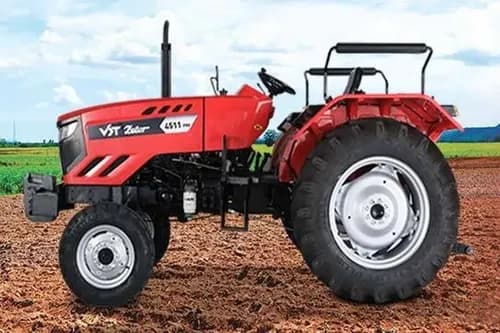Ad
Ad
Green Peas Farming: A Comprehensive Guide
Green peas are a popular vegetable known for their sweet taste, vibrant green color, and nutritional value. In this article, we will discuss Green Pea farming, Green pea varieties, Organic green pea farming and Small-scale green pea farming.

Green pea farming, also known as pea cultivation, is an agricultural practice that involves the cultivation of peas, specifically the green pea variety, for both domestic consumption and commercial purposes. Green peas are a popular vegetable known for their sweet taste, vibrant green color, and nutritional value.
Green peas are rich in vitamins, minerals, and dietary fibre, making them a healthy addition to various dishes. Green peas are scientifically known as Pisum sativum. Peas are not only a popular addition to various cuisines but also play a significant role in sustainable agriculture due to their ability to fix nitrogen in the soil.
In this article, we will discuss Green Pea farming, Green pea varieties, Organic green pea farming and Small-scale green pea farming.
Green pea Varieties
India has a rich diversity of green pea varieties cultivated across different regions, each offering unique qualities that cater to the preferences and agricultural conditions of the area. Here are some Green pea varieties in India:
- Asha: These types of peas are Widely cultivated for their sweet taste and high yield potential.
- Pant Matar 2: Well-suited for cultivation in the northern plains of India.
- Azad Pea-3: Grown for high yield and disease resistance. It is grown in various regions of India.
- Hara Matar: Variety of garden peas with tender, sweet pods. It is commonly used in Indian dishes.
- Lincoln: Popular for good yield potential and resistance to wilt disease.
- Bonavista: Preferred for high tolerance to cold weather.
- Pusa Early Dwarf: Suitable for high-density planting.
- Super Early: Ideal for those looking for a quick harvest.
These varieties collectively contribute to the agriculture industry of India, offering farmers a range of options to suit local climates and market demands. The diversity in characteristics, such as taste, disease resistance, and adaptability, ensures a resilient and productive green pea cultivation sector in the country.
Also Read: Onion Production: A Comprehensive Guide to Onion Farming
Green Pea Production in India
Heading north, the states of Punjab and Haryana are major players in the production of green peas. The well-irrigated fields and the agricultural expertise in these states make them important contributors to the overall pea production in India.
Moving towards the northern hilly regions, Himachal Pradesh emerges as a surprising contributor to green pea cultivation. Some parts of the state, with their temperate climate, provide suitable conditions for growing green peas.
Uttarakhand, another northern state, shares similarities with Himachal Pradesh in terms of supporting green pea cultivation.
Uttar Pradesh, often referred to as the "Heartland of India," stands out as one of the leading states in green pea production. The state's advantageous climate and fertile plains provide an ideal environment for cultivating green peas.
Madhya Pradesh, situated in central India, is another key player in green pea farming. The state boasts vast agricultural areas that are well-suited for pea crops. The climate and fertile soil make Madhya Pradesh a significant contributor to the overall green pea production in India.
Moving towards the western part of the country, Maharashtra emerges as a prominent state in green pea cultivation. Districts like Nashik, Pune, and Ahmednagar are known for producing a substantial quantity of green peas.
In the arid landscapes of Rajasthan, certain regions with appropriate soil conditions and irrigation facilities also contribute to green pea farming.
In summary, the cultivation of green peas in India is a geographically diverse phenomenon, with states like Uttar Pradesh, Madhya Pradesh, Maharashtra, Rajasthan, Punjab, Haryana, Himachal Pradesh, and Uttarakhand playing pivotal roles.
Organic Green Pea Farming
Organic pea farming is a sustainable and eco-friendly way of growing peas. It involves the use of natural fertilizers and pest control methods, which are free from harmful chemicals. In this method, farmers focus on maintaining soil health through composting, crop rotation, and other organic practices.
Green peas, being legumes, also contribute to nitrogen fixation in the soil, enhancing its fertility. Organic pea farming not only promotes the health of the soil but also ensures that the peas produced are free from harmful residues, making them a healthier choice for consumers.
As consumers increasingly seek organic and sustainably produced food, organic green pea farming serves as a responsible and ethical choice for both farmers and consumers alike.
Small-scale green pea farming is an accessible and rewarding agricultural venture that can be pursued by enthusiasts with limited space and resources. Small-scale green pea farming is particularly suitable for home gardeners or individuals looking to engage in sustainable and locally sourced food production.
The cultivation process involves selecting a pea variety well-suited to the local climate, providing proper support for the plants to climb, and ensuring adequate water and nutrient supply. With a relatively short growing season, green peas offer a quick turnaround from planting to harvest, making them an ideal choice for those looking to enjoy the fruits of their labour in a short span of time.
Small-scale green pea farming not only provides fresh and flavorful peas but also contributes to a sense of self-sufficiency and a deeper connection to the food production process.
Small-scale pea farming is an excellent way to start organic pea farming. It is easy to manage and requires less investment. Pea farming is very easy whether you grow it commercially or on a small scale in the home garden.
Climate and Soil
Peas grow in cool climates, making them suitable for both spring and fall cultivation. They prefer well-drained, sandy loam soil rich in organic matter. The pH level of the soil should be slightly acidic to neutral.
It's crucial to choose a planting site that receives full sunlight for optimal growth. The pH range for peas farming is 6-7.5. To prepare the soil, remove any weeds from the field, then plough and harvest the field.
Planting
Green peas can be grown from seeds, and they are typically sown directly into the soil. The seeds are planted in rows with proper spacing to allow for adequate air circulation. Planting depth is usually around 1 to 1.5 inches. Depending on the variety, peas may require support in the form of trellises or stakes as they grow.
Peas require consistent moisture throughout their growing season, especially during flowering and pod development. It's important to water the plants evenly, avoiding waterlogging that can lead to root rot. Mulching can help retain soil moisture and suppress weeds.
Fertilization
While peas can fix nitrogen from the air with the help of nitrogen-fixing bacteria in their root nodules, they still benefit from a balanced fertilizer application. Adding compost or well-rotted manure before planting can enhance soil fertility.
Pest and Disease Management
Common pests that can affect green peas include aphids, pea weevils, and caterpillars. Regular maintenance and the application of organic or chemical pesticides as needed can help control these pests. Diseases like powdery mildew and root rots should be promptly addressed through proper crop rotation and the use of disease-resistant varieties.
Harvesting
The harvesting time depends on the variety and can range from 50 to 70 days after planting. Pods are typically ready for harvest when they are well-filled but still tender. Harvesting should be done regularly to encourage continuous pod development.
Storage
After harvesting, it's essential to handle peas gently to avoid bruising. Peas are best enjoyed fresh, but they can also be frozen for later use. Proper storage conditions, such as cool temperatures and high humidity, can help extend the shelf life of fresh peas.
Also Read: Grape Production in India
Crop Rotation
To maintain soil health and reduce the risk of diseases, it's advisable to practice crop rotation. Avoid planting peas in the same location year after year.
Green peas farming can be a rewarding practice, providing a fresh and nutritious addition to meals while contributing to sustainable agricultural practices. Whether grown on a small scale in backyard gardens or on a larger commercial scale, the cultivation of green peas requires attention to detail and a commitment to best agricultural practices.
Conclusion
Green pea farming in India provides several benefits, both nutritionally and economically for farmers. Farmers can prosper in this field by using appropriate agricultural techniques, successfully managing pests and illnesses, and applying smart marketing strategies. To maximize productivity and profitability, keep up with the newest trends and advances in green pea farming.
Features & Articles
Comprehensive Guide to Tractor Transmission System: Types, Functions, and Future Innovations
Learn about tractor transmission types, components, functions, and selection factors to enhance efficiency, performance, and agricultural productivity....
12-Mar-25 09:14 AM
Read Full NewsModern Tractors and Precision Farming: Transforming Agriculture for Sustainability
Precision farming enhances agriculture by integrating GPS, AI, and modern tractors for sustainable, efficient, and productive farming practices in India....
05-Feb-25 11:57 AM
Read Full NewsTop 10 Tractors Under 30 HP in India 2025: Guide
Top 10 tractors under 30 HP in India offer efficiency, affordability, and power, ideal for small farms with diverse agricultural needs....
03-Feb-25 01:17 PM
Read Full NewsNew Holland 3630 TX Super Plus vs Farmtrac 60 PowerMaxx: Detailed Comparison
Compare New Holland 3630 and Farmtrac 60 tractors by specs, price, and features to find the perfect fit for your farm....
15-Jan-25 12:23 PM
Read Full NewsSwaraj 735 FE Vs Eicher 380 2WD Prima G3: Detailed Comparison
The Swaraj 735 FE and Eicher 380 2WD Prima G3 are reliable, powerful tractors suited for various farming tasks....
14-Jan-25 09:41 AM
Read Full NewsHow to Choose the Perfect Tractor for Your Farm: A Comprehensive Guide
Choose the right tractor by assessing farm needs, horsepower, efficiency, comfort, and budget to enhance productivity and savings....
09-Jan-25 09:43 AM
Read Full NewsAd
Ad
As featured on:


Registered Office Address
Delente Technologies Pvt. Ltd.
M3M Cosmopolitan, 12th Cosmopolitan,
Golf Course Ext Rd, Sector 66, Gurugram, Haryana
pincode - 122002

























